If you have ever contemplated what goes in to heating a home, you may have thought about your electric company or natural gas company and wondered about the resources the energy came from. You may have thought about things like wind, water, oil or coal. For those of us who have a woodstove, however, we know exactly what goes in to heating a home. We can measure it out in cords, months of cold temperatures, trips to the woods with a truck, trips with a wheelbarrow to fill a woodshed, and the rate at which the supply of firewood is depleted during the heating season. We can measure it out with the sweat of our brow.
This year we passed a self-sufficiency milestone of cutting, hauling, splitting and stacking all our own firewood. To give some perspective on this homesteading accomplishment, many people with woodstoves get their wood delivered, and do the work of stacking it. On my old homestead in Elmira, a neighbor who worked at the mill delivered logs and mill ends. When I lived on my own at Empty Gate Farm, I gathered log rounds from trees the city had cut down, cut them up with a chainsaw and split them with a hydraulic splitter. I managed to put up enough wood to heat my little farm cottage for a year with a little left over. To this day I am quite proud of this accomplishment as a single mother at the time, and wrote this post about it:
Last year we were just getting settled in on our new homestead and had to get a few loads of wood delivered by friends and local folks. We underestimated the number of cords it would take to heat our house, and this motivated us to take on the task of putting up an adequate firewood supply for the coming heating season. To accommodate all this wood, Corey built a new woodshed a little closer to the house
than our current one. The old woodshed became a place to stockpile less seasoned wood for later in the early spring. This was also done out of necessity due to the thriving wild
honeybee hive in the wall of the woodshed right by the door. We decided
to give them their space until the colder months when they aren’t
active. Bees need all the help they can get right now, so we felt good about just letting them bee.
than our current one. The old woodshed became a place to stockpile less seasoned wood for later in the early spring. This was also done out of necessity due to the thriving wild
honeybee hive in the wall of the woodshed right by the door. We decided
to give them their space until the colder months when they aren’t
active. Bees need all the help they can get right now, so we felt good about just letting them bee.
To further aid in our firewood gathering endeavors, Corey rebuilt an old utility trailer that belonged to a friend’s Grandfather. Between that and our pickup truck, we were able to go out with a Forest Service permit and haul home good sized loads of rounds we cut up from slash piles. From May until October we made many a weekend trip, and I honestly lost count, but with each one we knew we were one step closer to heating our home.
A friend let us use his Husqvarna Rancher chainsaw for the season, which helped us do everything from felling a couple of problem trees on our property to cutting up Douglas-fir logs left behind by Forest Service thinning crews. We were fortunate to spot a few maples in the slash piles, and accumulated a good stack of hardwood for those really cold winter days ahead.
With each trip out to the woods, we accumulated another pile of logs down by the chicken coop, which Corey would promptly split by hand and stack into long rows to season through the summer heat. We discovered by splitting the wood in smaller amounts over time, there was no need for a hydraulic splitter. We also discovered when friends come to visit from the city and say they want to help with chores, splitting wood is a rewarding activity for all.
There was something deeply satisfying about seeing those long rows stacked up and growing longer as the summer went on.
In September, Corey started construction on a woodshed design we found on the Internet. We re-purposed some wood and concrete footings from around the place so we wouldn’t have to buy as much new, and used roofing shingles left over from the house. We used pallets along the bottom for the wood to sit on, and in the middle as a divider to hold it up. It was a good feeling to know we had been able to re-purpose some materials in making the new structure.
Finally, we got it all stacked up in the new woodshed before the rain set in. Even after that, we cut our last two loads in the rain and stacked it in the lower shed to dry out a little more. The honeybees had settled down a little by that point so we were able to co-exist in the woodshed. The temperatures didn’t get cold enough for us to need a first fire until late October, and then not consistently until mid-November, so the benefits of our labor were a bit delayed. When the need for the first fire of the year finally came around, it sure was a good feeling to sit around the cheery glow of the woodstove and know we were responsible for our warm house. When it’s all said and done, it was a lot of work, but the rewards are very tangible and we know exactly what goes in to heating a home.
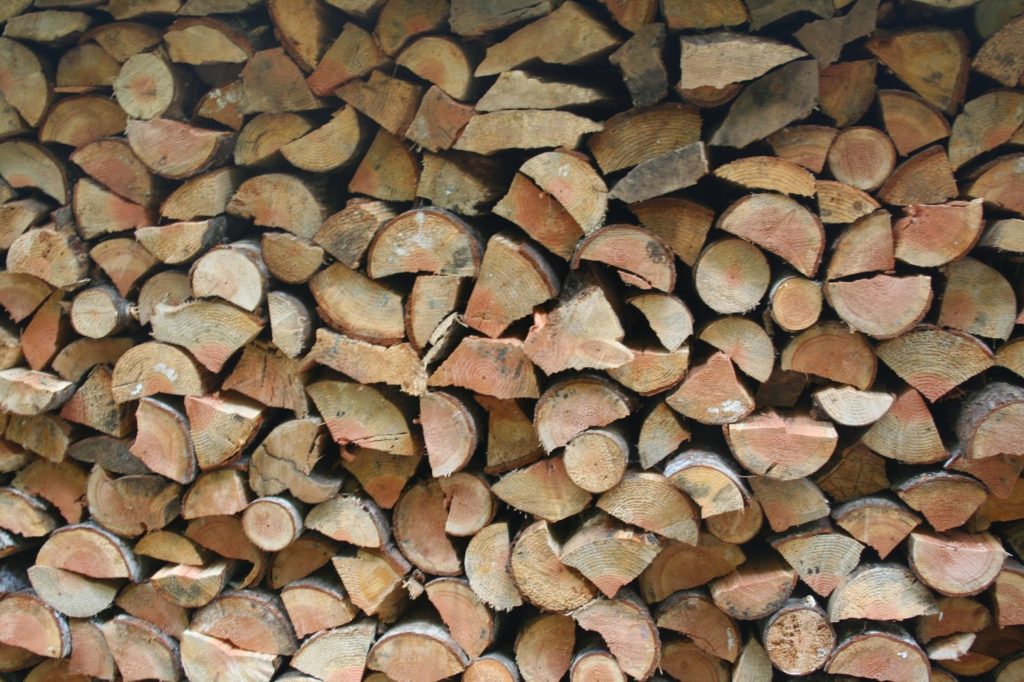
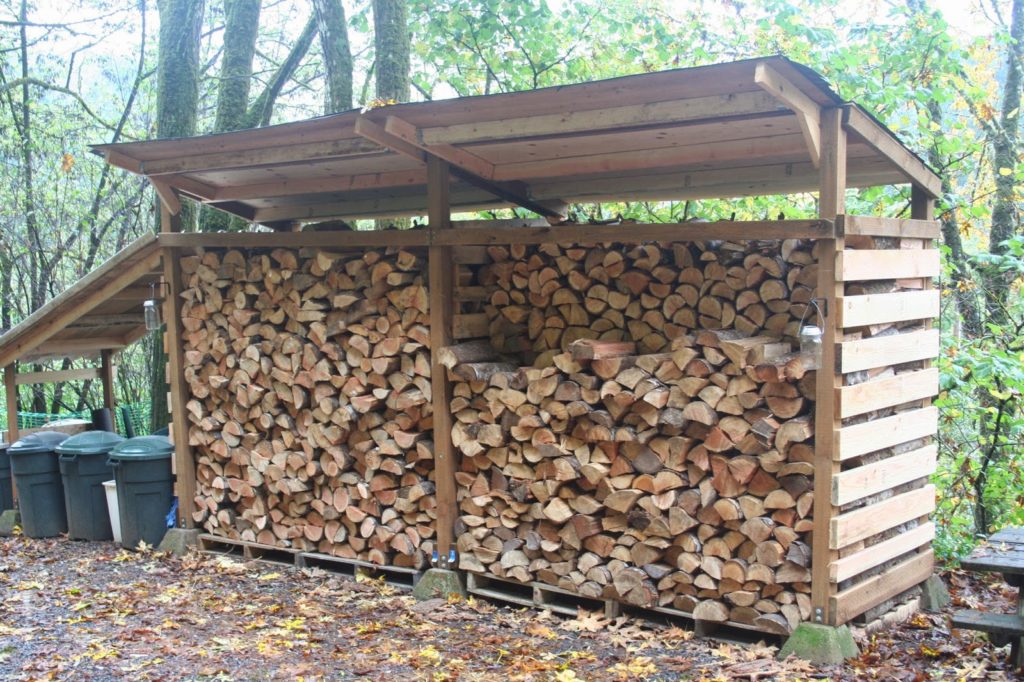
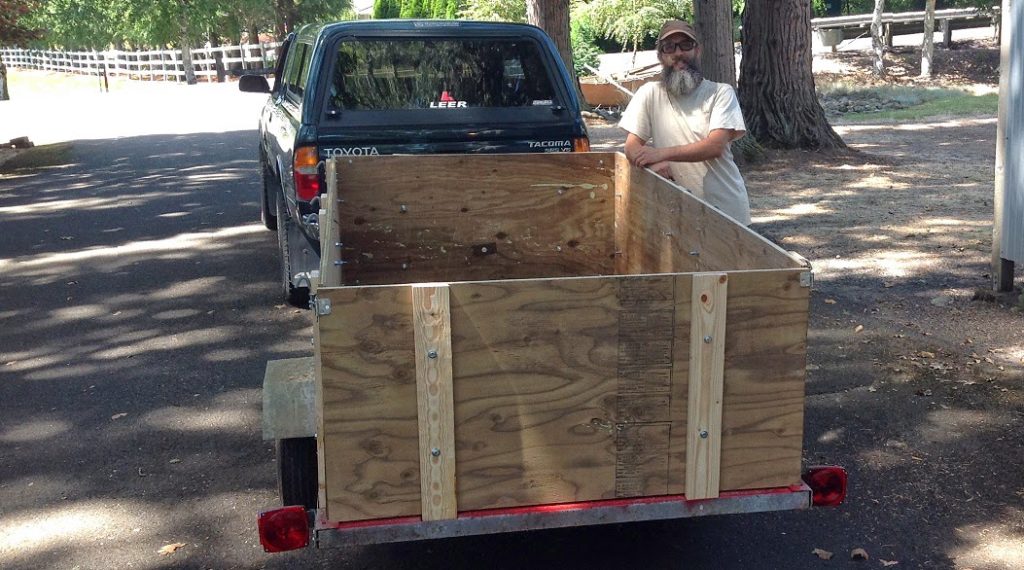
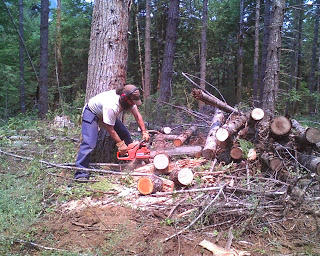
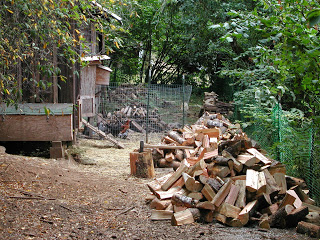

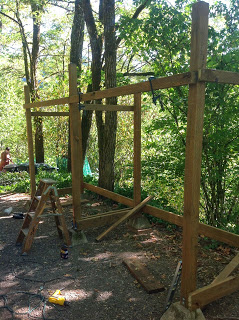

We are hoping to put in a wood stove sooner rather than later. We cut and split by hand about 12 ricks a year for our Aunt and Uncle. Of course once we get our stove they'll have to find their wood elsewhere! There is nothing like wood heat!
I could not agree more! 🙂